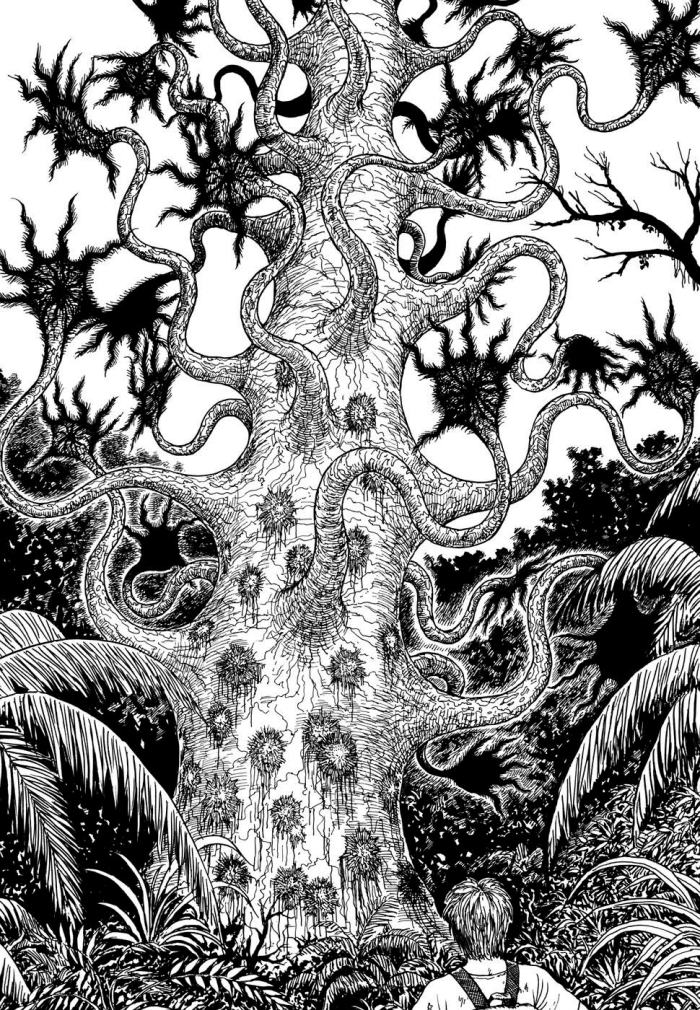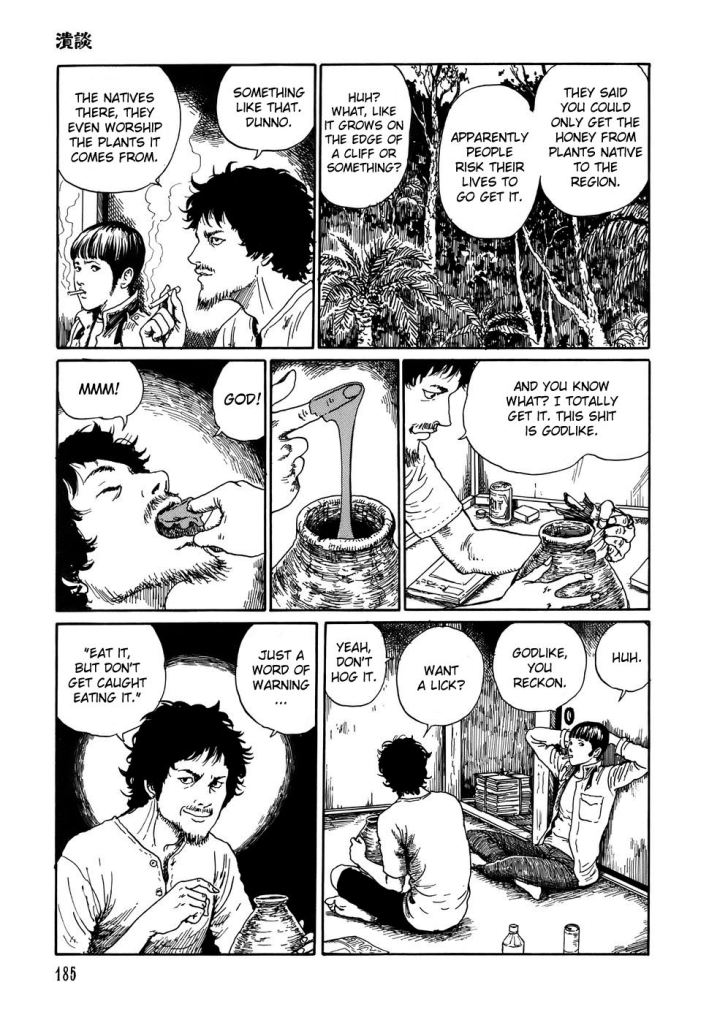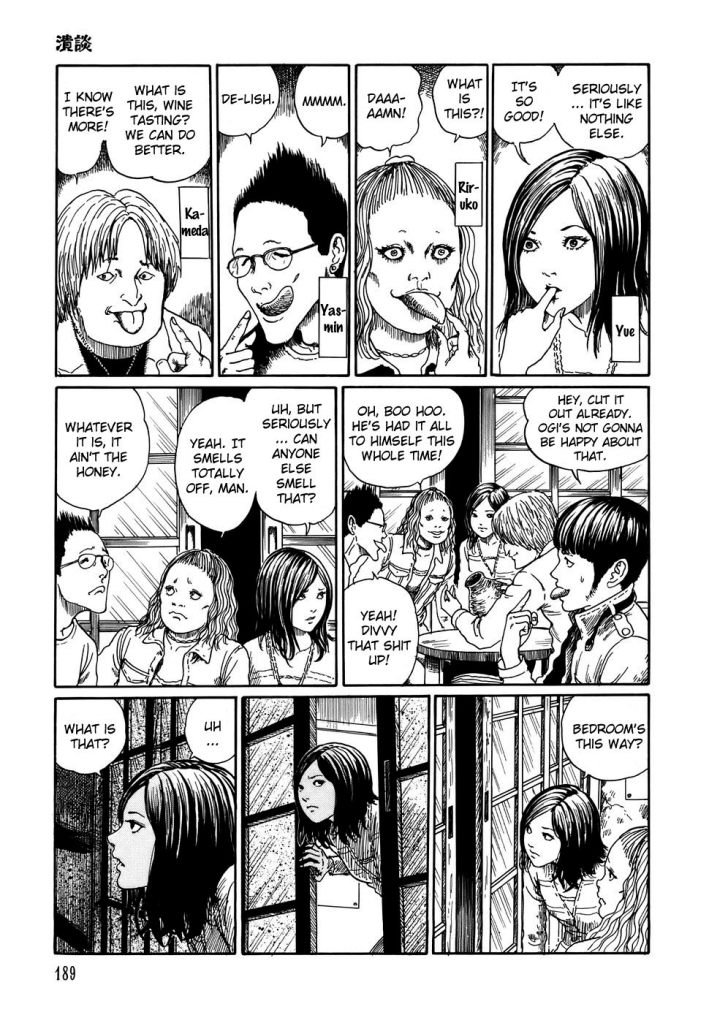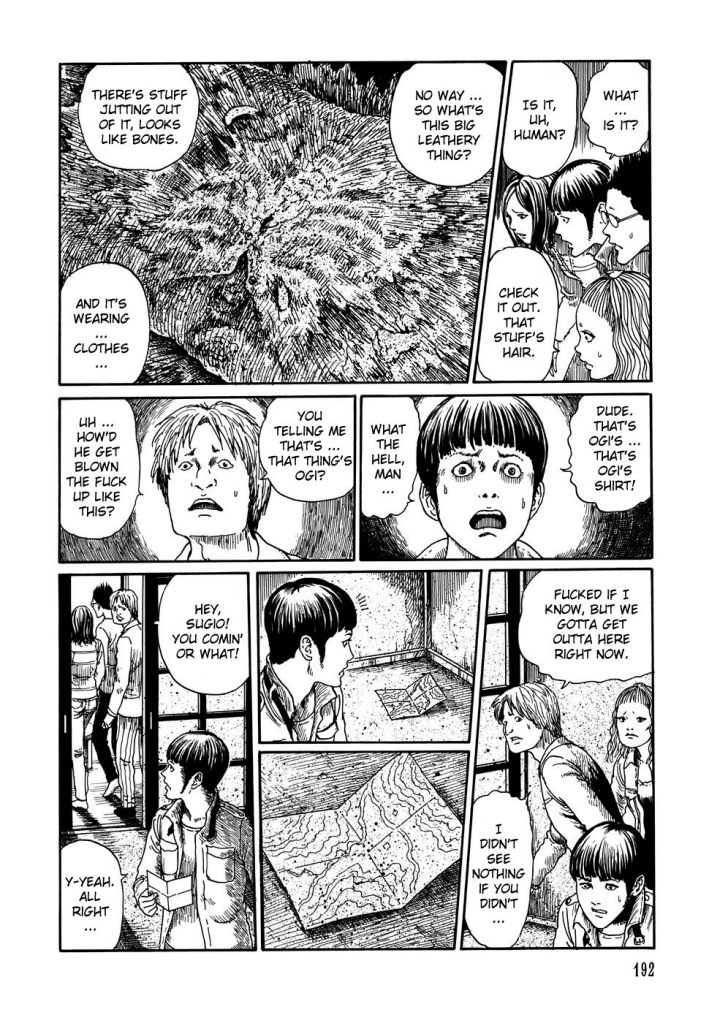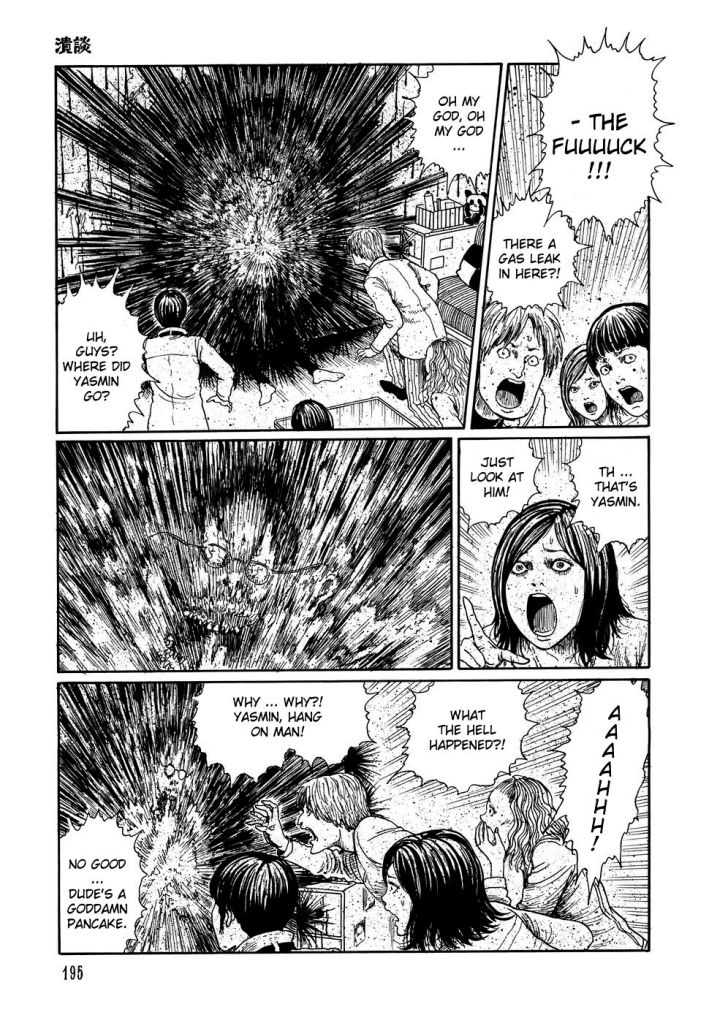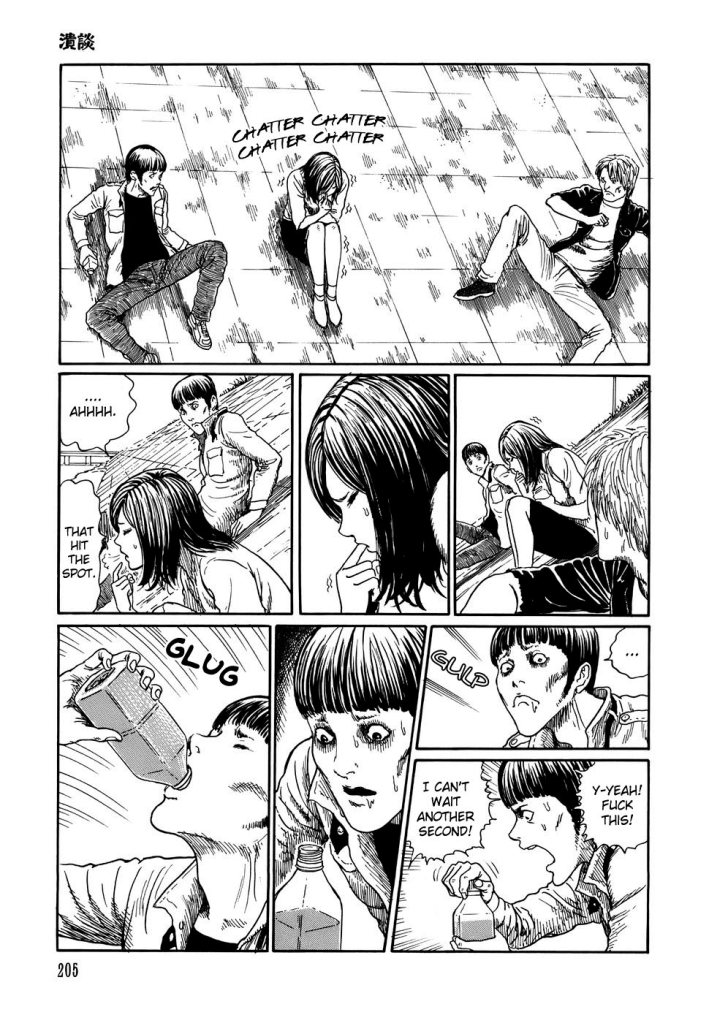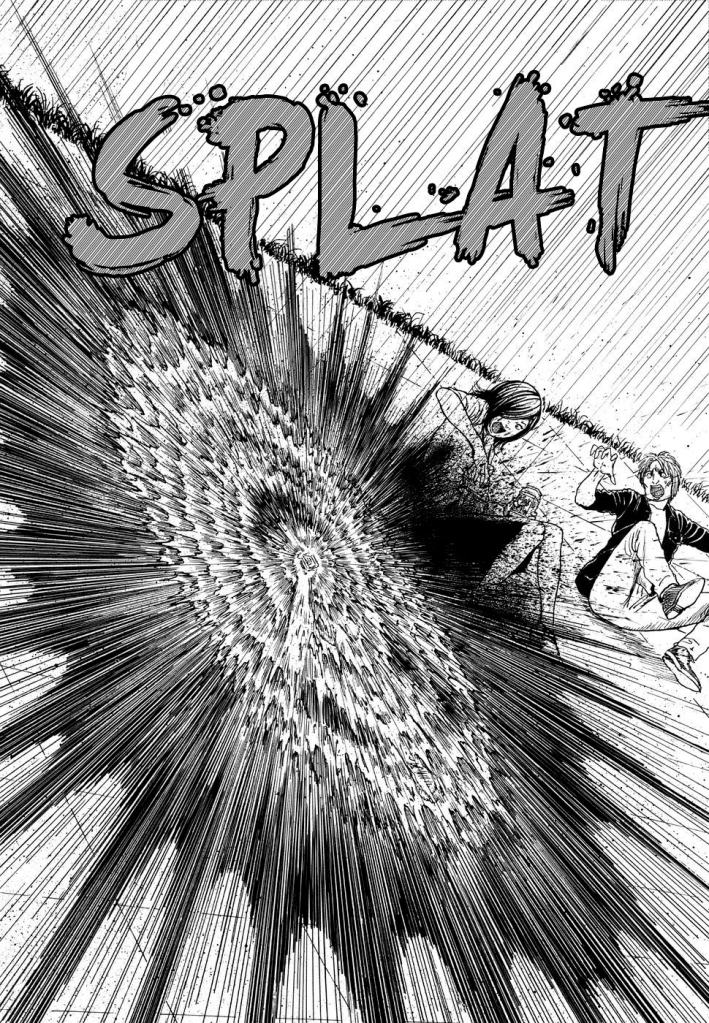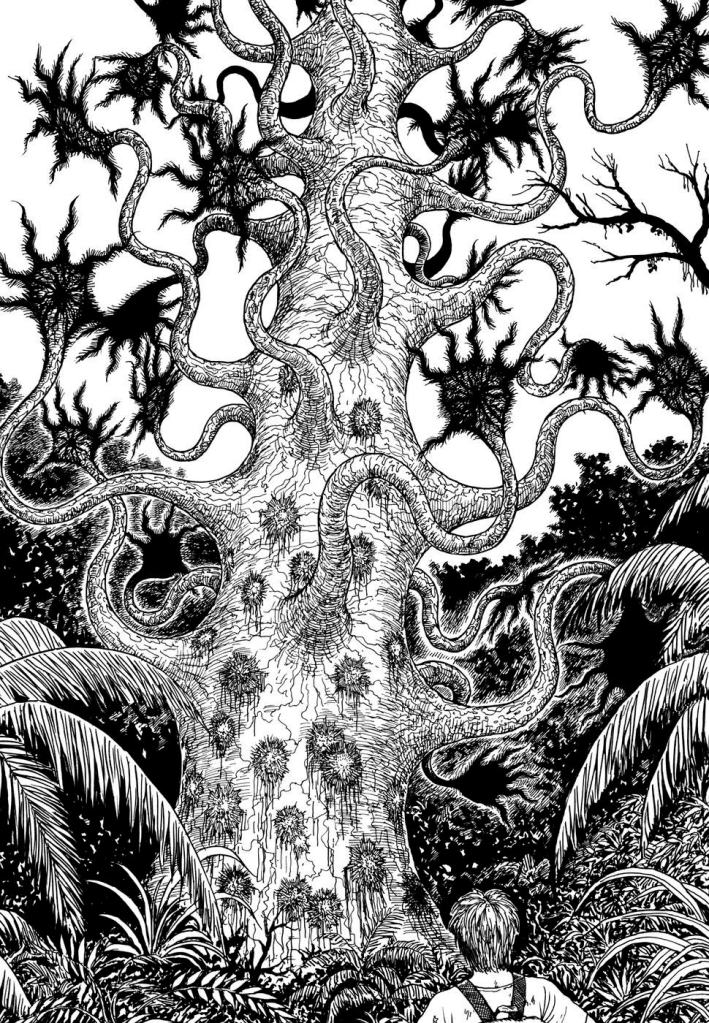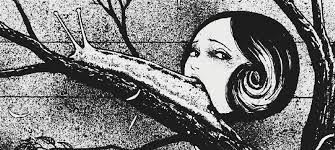Hola mis amigos, Bienvenidos a otra entrada de mi blog.
Y hoy les traigo mi opinión sobre el Episodio número V del anime favorito de todos de la actualidad… Chainsaw Man.
De nuevo, les pido perdón de antemano, porque sigo preparando mi reflexión sobre el Episodio III, sigo trabajando en él, pero hasta entonces, llevaré a cabo mis pensamientos sobre el Episodio V, y la verdad es que me gustó bastante, aunque sí de ver ser sincero, debido a que me leí el manga, yo esperaba que no fuera a ser frenético como los otros dos, pero esa sólo es mi opinión, lo que voy a compartir ahora, podrán leerla y después sacar sus propias conclusiones.
Pero antes de dar comienzo a mi entrada, les debo hacer a todos la típica pregunta.
¿Se encuentran bien? ¿Saludables?
Sí la respuesta es sí, entonces yo soy feliz, ahora… A afilar las motosierras con el Episodio V de Chainsaw Man.
EPISODIO V

De nuevo, tenemos a Power recompensando a Denji con ese ansiado sueño suyo, tocar los senos a una chica, pero en este caso, Power le permitirá a Denji tocárselos tres veces – la primera por rescatar a Nyakko, la segunda por matar al Demonio de los Murciélagos, y la tercera por salvarla a ella. Y… se nota que Denji estaba por lanzarse a la carga mientras que Power estaba rendida a sus pies… más o menos.
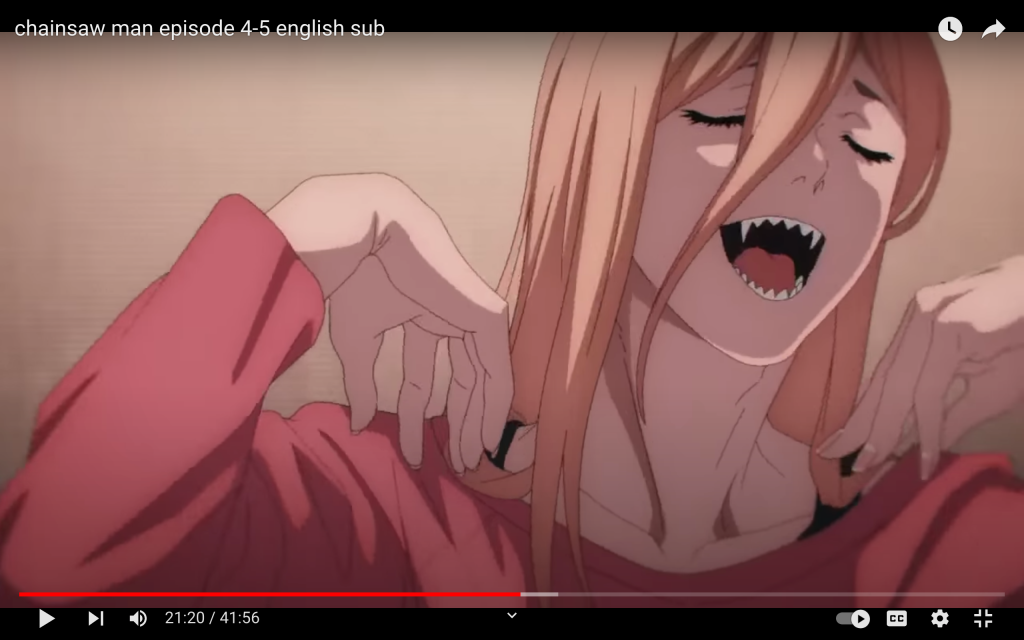
El caso es que Denji empieza a manosearlos, pero los gemidos iniciales de Power son tan falsos que hasta me dan risa, así como esas caras, aunque no tanto como la revelación de que Power usa almohadillas en sus pechos para hacerlos más grande. Y una cosa que también valoro es el que esta parte se sienta más natural en el ánime. La verdad es que la sentí más cómica en el manga, una muestra del genio de Fujimoto-sensei.
Ahora a Denji le quedan dos manoseos. ¡Esa pose de zombie! ¡Ahora me pregunto quién es el auténtico Demonio Zombie!
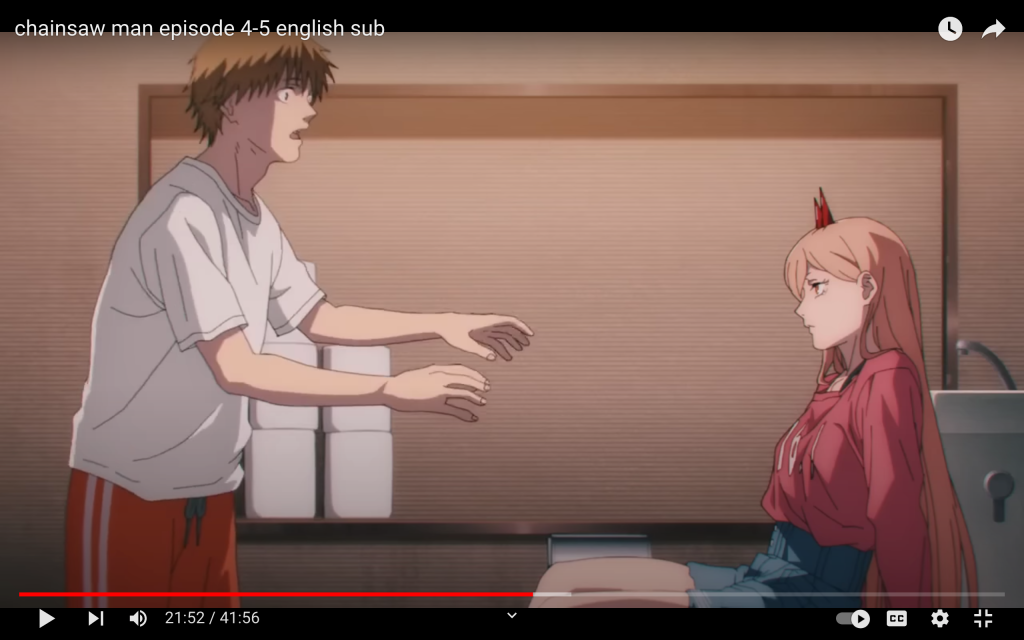
A pesar de que Denji toca con inhibiciones los senos de Power, se ve que hay algo fuera de lugar en lo que ocurrió. ¡Y no me refiero a eso! Esa horrible sensación de vacío cuando logras una meta después de que tu corazón es alimentado por ese rico sueño.


Por su parte, Power está recontenta, y se nota que ahora hay una evolución en la amistad de ambos. ¡Level Up! ¡Power Up!


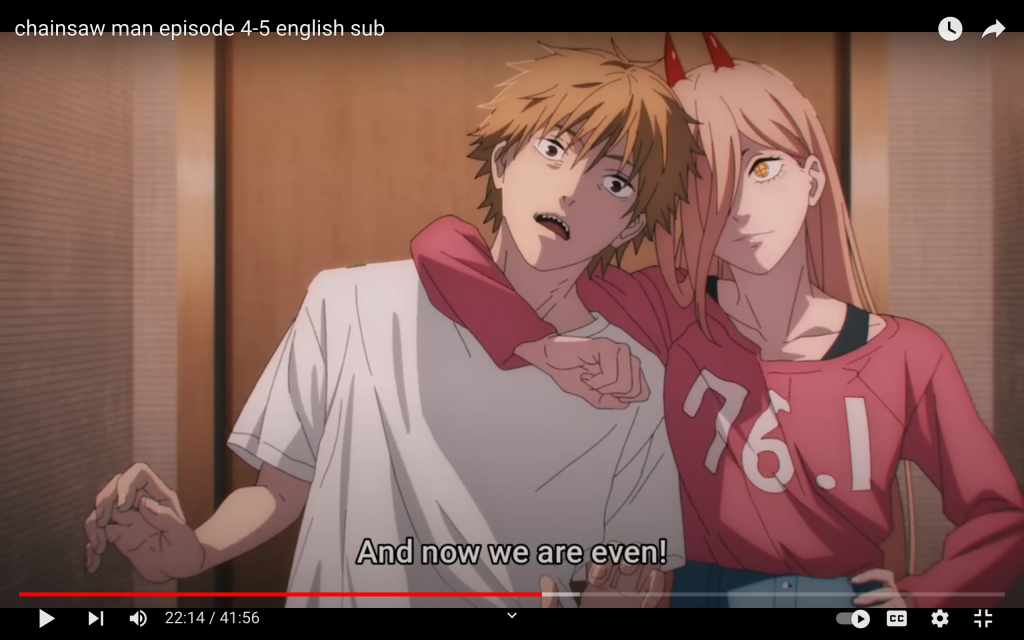
El caso es que por los siguientes días, Denji se la pasa muy abstraído, ni siquiera las divertidas travesuras de Power hacen que vuelva en sí.



¡Y de nuevo debe venir Makima al rescate de nuestro niño motosierra!
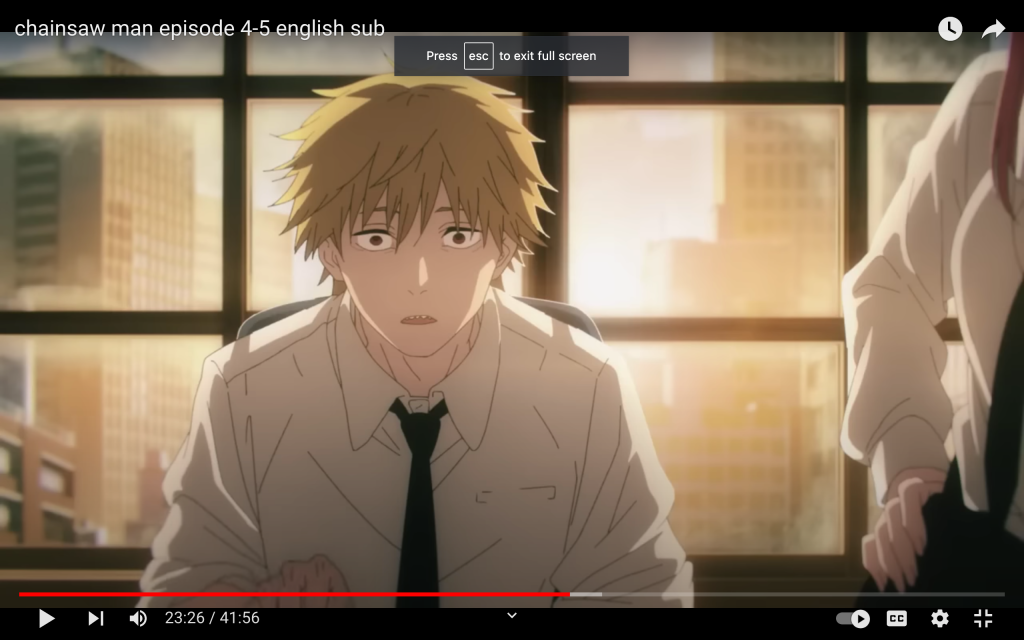
Denji le explica a Makima que tocar senos no fue la gran cosa, y se pregunta sobre sí, una vez que tenga otro deseo, lo que realmente vale es el camino en sí y no la meta, cosa que le parece, en términos simples… ¡Una completa mierda! Por lo que Makima le explica a Denji que entre más entiendas a la persona, mejor es el acto sexual, pero entender a la persona es más complicado de lo que parece, por lo que Makima le dice que empiece tocándole la mano, que sepa lo largos que son los dedos, la temperatura de la palma, y las orejas.


Pero lo realmente épico acá es cuando Makima le muerde los dedos a Denji. ¡Y el chico queda más que satisfecho!

¡Wow! Makima sólo necesita una lección para que Denji sepa lo que es el amor. Esto es un gran mérito. Y he de decir que la calidad de las imágenes es muy buena. ¡Kudos a Studio MAPPA! Eso sí es calidad.
Hay una imagen de este mismo segmento que es ésta, que les juro pensé era otra hecha por Studio MAPPA. ¡Y me alegro que no sea el caso! No porque sea mala, sino porque se ve que es muy inferior a lo que MAPPA nos ha estado ofreciendo hasta ahora.
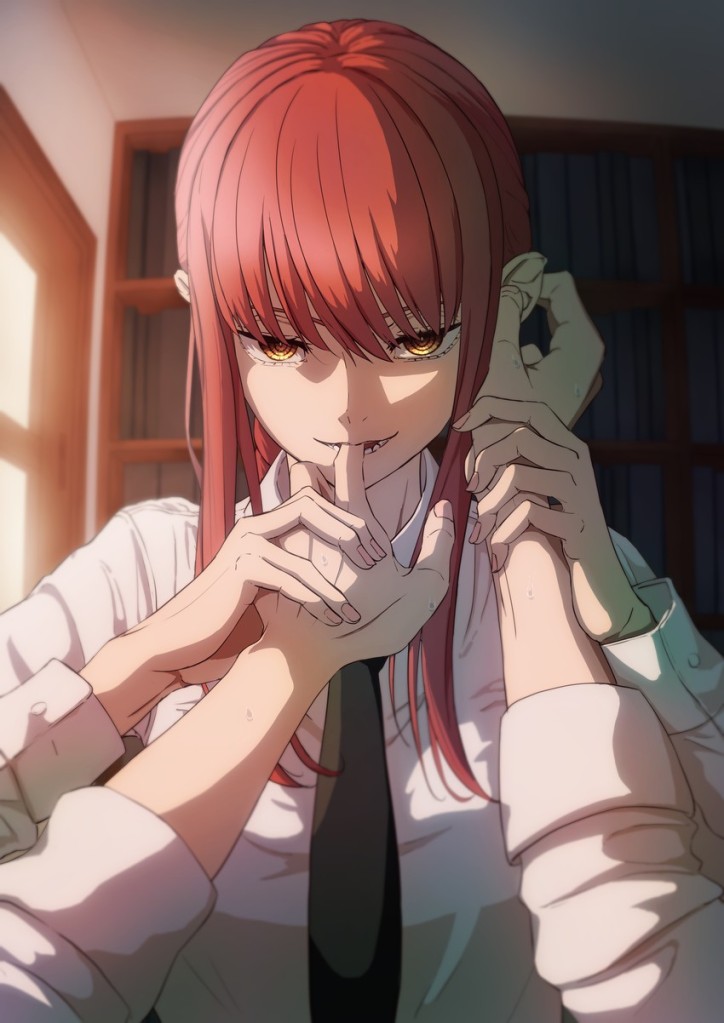
Y luego… ¡Jackpot!

Denji le tocó los senos a Makima. ¡Damas y caballeros! ¡Nuestro Denji se ha vuelto un joven adulto! ¡Sólo le falta graduarse de hombre!
En serio. Esa reacción de Denji simplemente no tiene precio.
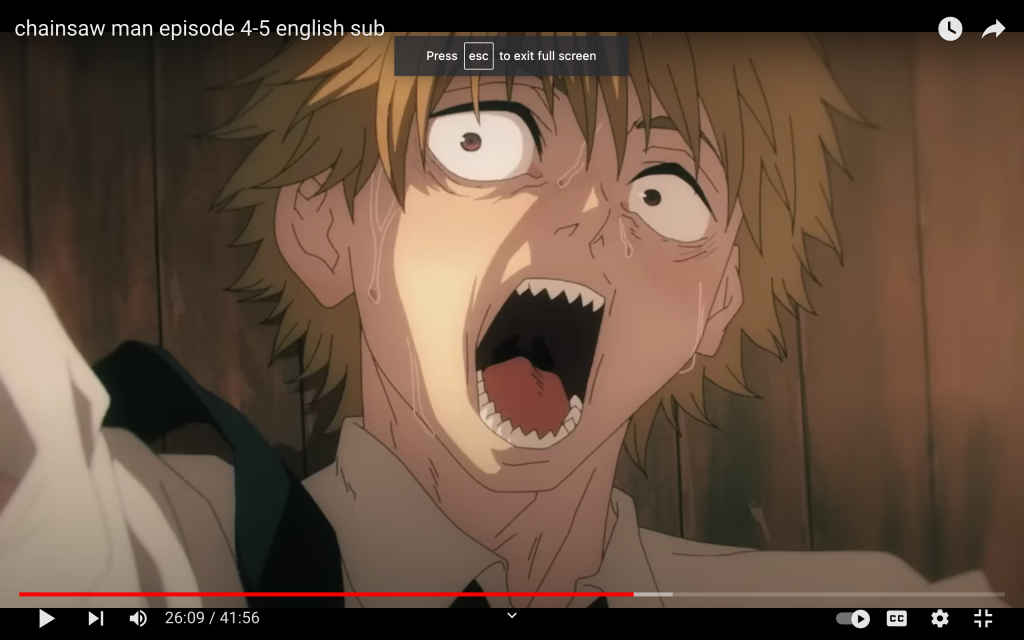
Leí en Internet que muchos criticaron la adaptación de esta escena por considerar más “erótica” que cómica, sensación que se percibió en el manga, aunque no de mi parte. Reconozco que tuvo instantes incómodos, pero me pareció muy bien dirigida. Por cierto, aquí está el link a la página donde hicieron las críticas, como muestra de que no me estaba inventando nada.
El caso es que poco después Makima le pide a Denji que mate al infame Demonios de las Pistolas, o Gun Devil, uno de los demonios más poderosos que existe, tanto que todos los Devil Hunters quieren, y tanto que hasta los Demonios menores le “ruegan” por una parte de su fuerza.
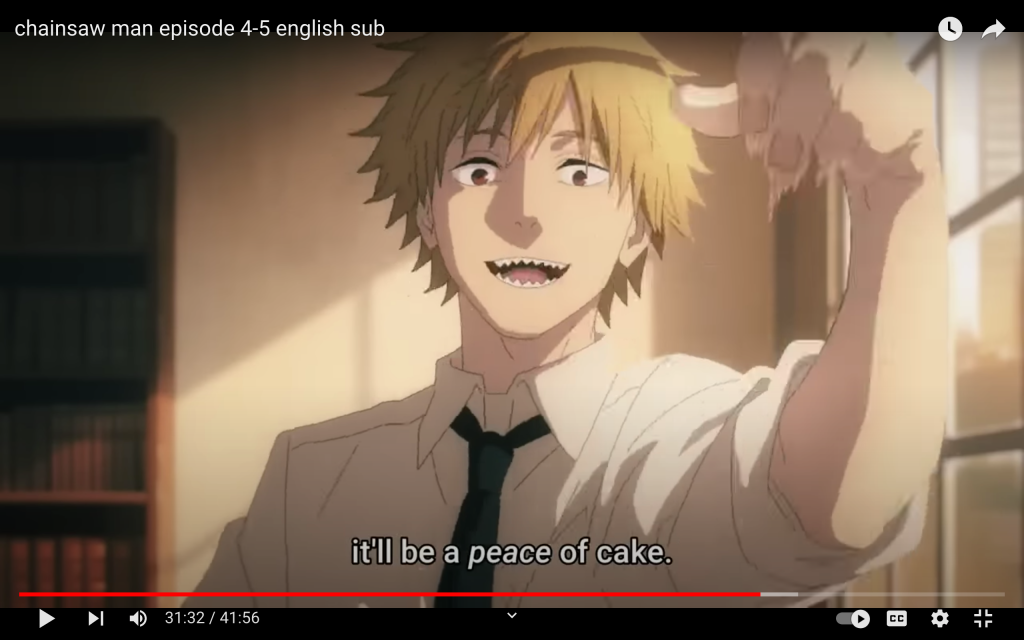

Aw! Miren a nuestro lindo Denji! ¡Está emocionado!
Y como no, porque Makima dijo que si Denji mataba al Demonio de las Pistolas, le concedería cualquier deseo, hasta el sexo.
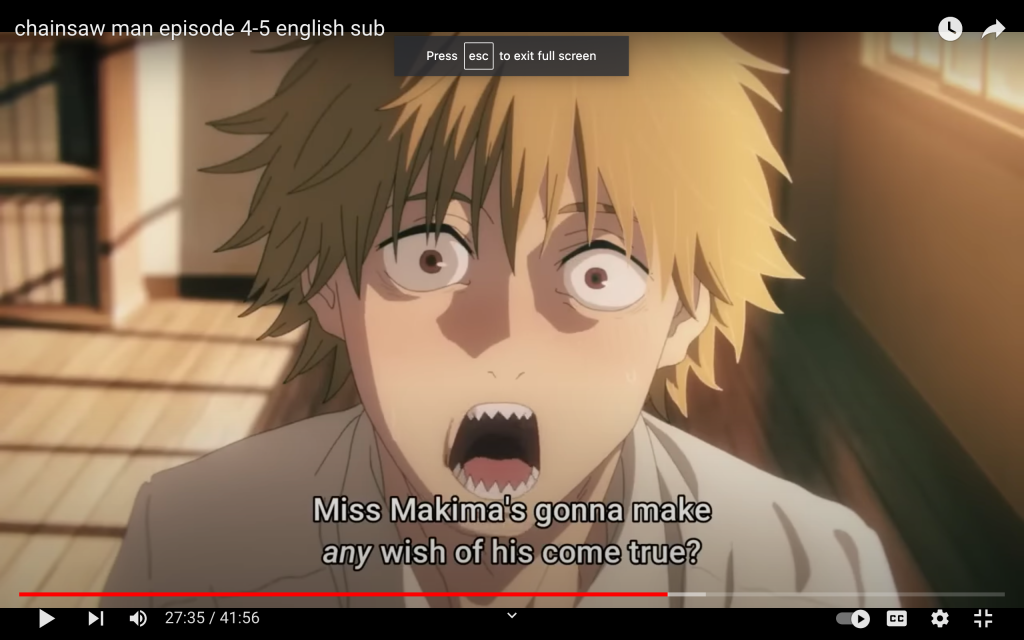
¡Y si! ¡Espero que no les moleste que le llame el Demonio de las Pistolas! Porque Demonio de las Armas suena un tanto genérico.
Poco después Makima le explica a Denji que debido a un incremento de la venta de pistolas y armas de fuego en el oficio de los Devil Hunters, hubo un aumento en la delincuencia, y en el terror a las armas de fuego. ¡Nada más lejos de la ficción!


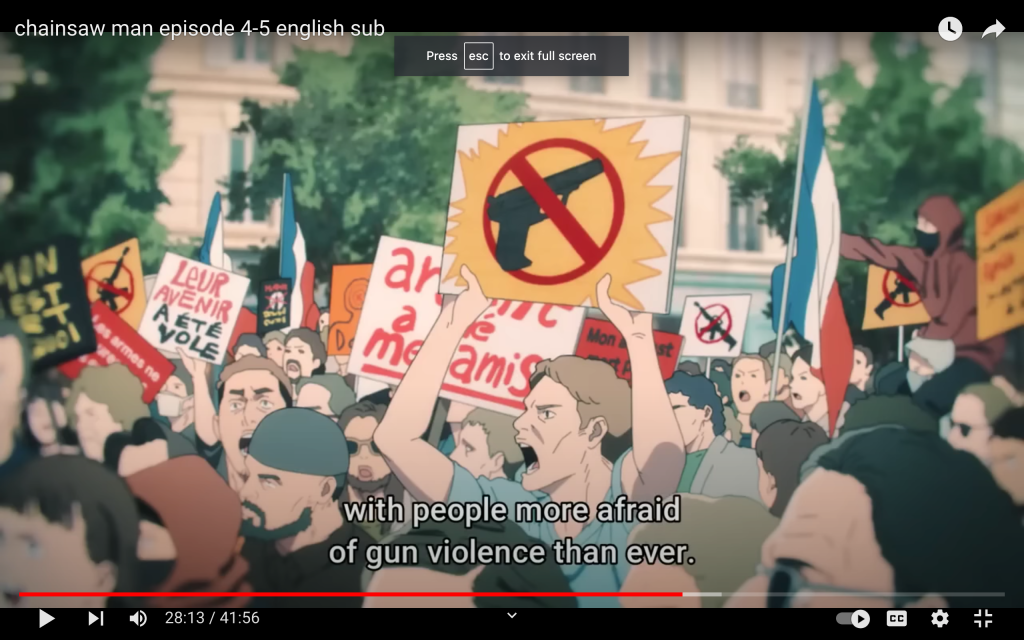
Y luego Makima dice que el Demonios de las Pistolas apareció tras un terrible atentado terrorista en Estados Unidos con armas de fuego.Pero… ¡A quién pretenden engañar! ¡Todos sabemos a qué atentado está hablando! No diré más al respecto.
Luego tenemos un flashback del pasado de Aki, el mismo día en que apareció el Demonio de las Pistolas.


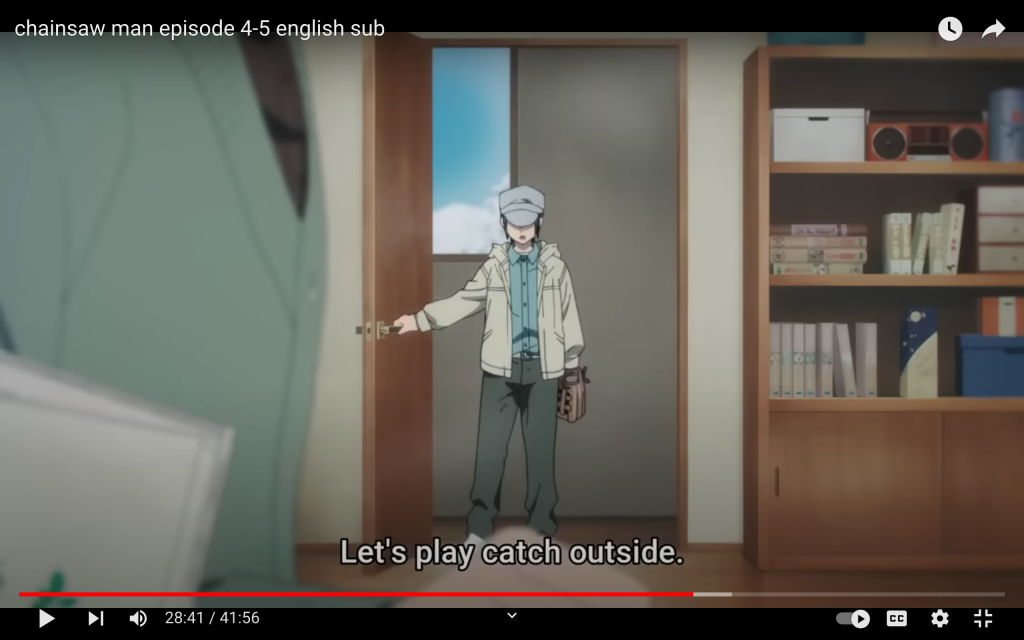
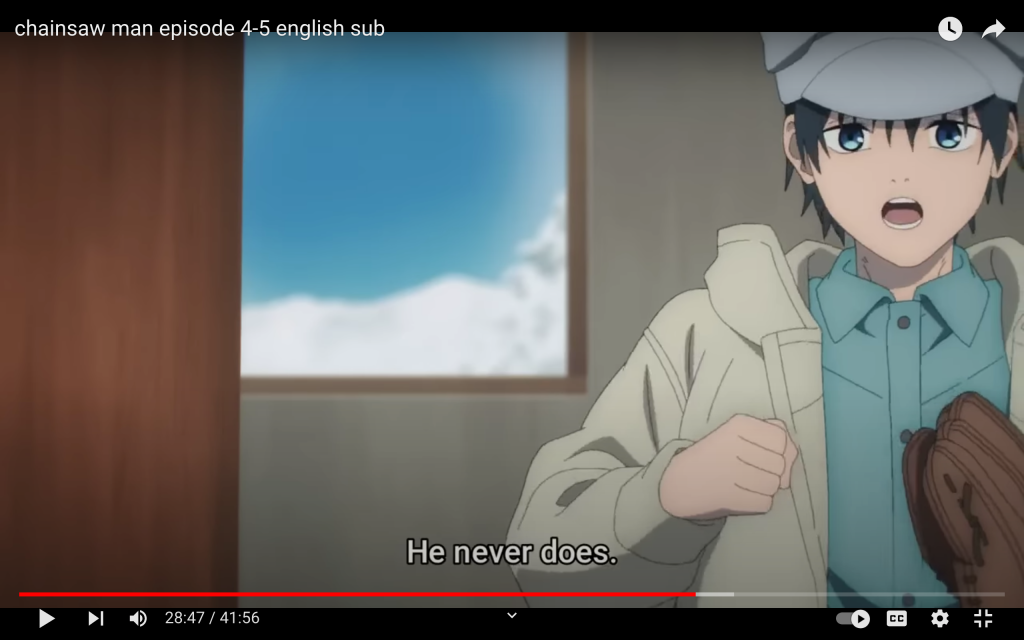
Resulta que su hermano, Taiyo, estaba muy enfermo, aun así, éste quería jugar con Aki. Los dos hermanos juegan y se divierten con la nieve. ¡Una escena muy hermosa! Me daba la sensación de que la pasarían muy bien, especialmente cuando Aki le sugiere a Taiyo jugar a la pelota e ir por su guante.
Y todo parecía ir bien, pero como es el mundo insano de Chainsaw Man, no tarda en pasar la tragedia.



No sólo de Aki, sino también 1.2 millones de personas fueron asesinadas brutalmente por el Demonio de las Pistolas.

El caso es que Denji termina aceptando. ¡La verdad es que me parece muy tierno ver a Denji recuperar su entusiasmo! Makima le muestra a Denji una parte del cuerpo del Demonio de las Pistolas, si los demonios comen de él, se volverán más poderosos.

¡Ugh! Vale que son básicamente balas magnéticas, pero esa imagen no deja de ser grotesca, igual que el propio Demonio. ¡Sí! ¡He visto su apariencia! No la revelar aquí, pero creáme… Es desagradable.


Gracias a eso, ahora puedo entender mejor que la amenaza de los Demonios es mucho peor de lo que pensaba.

Y por cierto… ¿Soy yo o ésta es una referencia a Gyo de Junji Ito? ¡Bravo Fujimoto-sensei!
Al poco tiempo, Makima manda a la Sección Especial Cuatro a un motel, para matar a otro Demonio que aparentemente consumió una bala del Demonio de las Pistolas. Y este grupo es conformado por Aki, Denji, Himeno, Hirokazu Arai, Kobeni y Power.
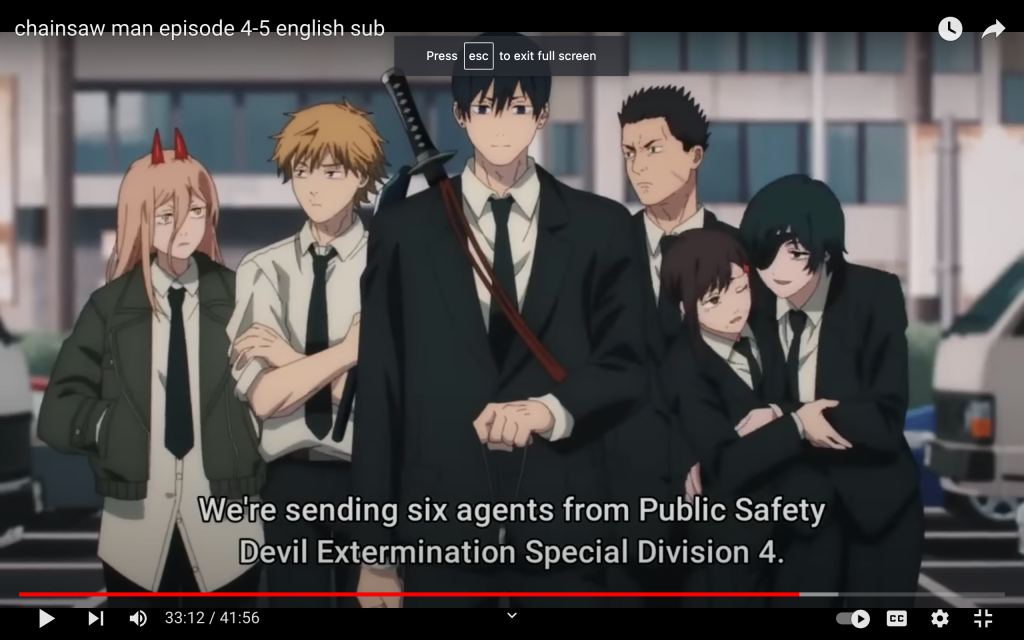
Una vez más, Denji y Power se roban el show. Aki los reprende por ser maleducados, cosa que ya han convertido en hobby, y sólo le bastó a Aki un poco de chicle para calmar a estos perritos callejeros.
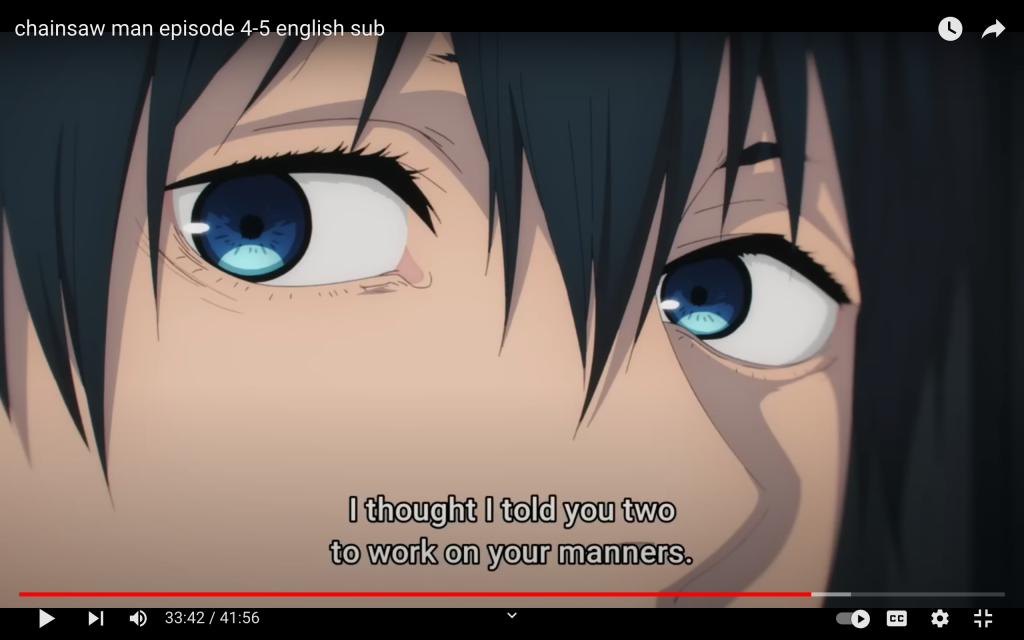
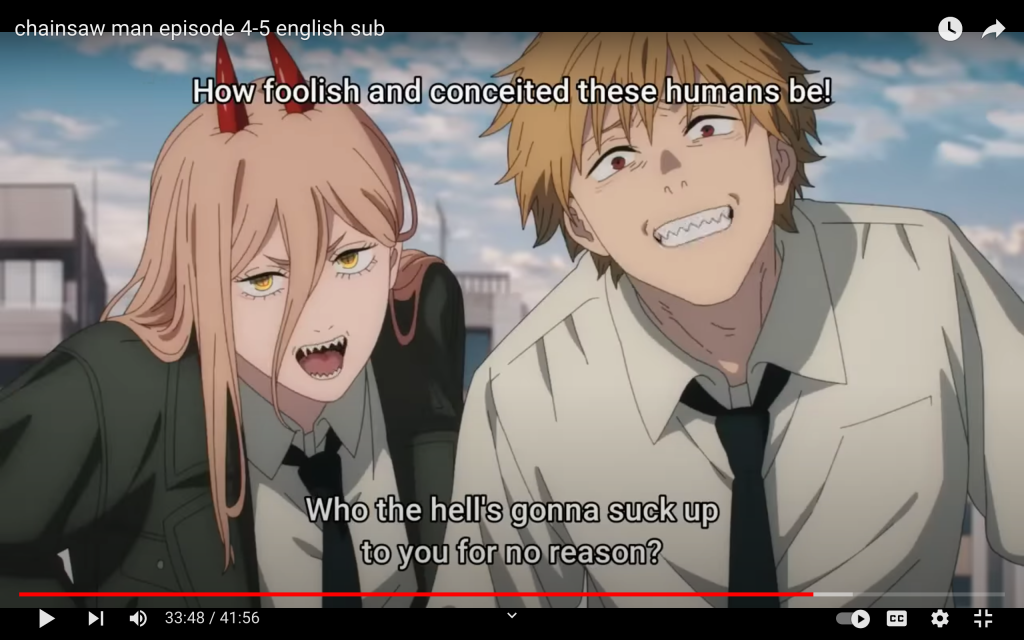
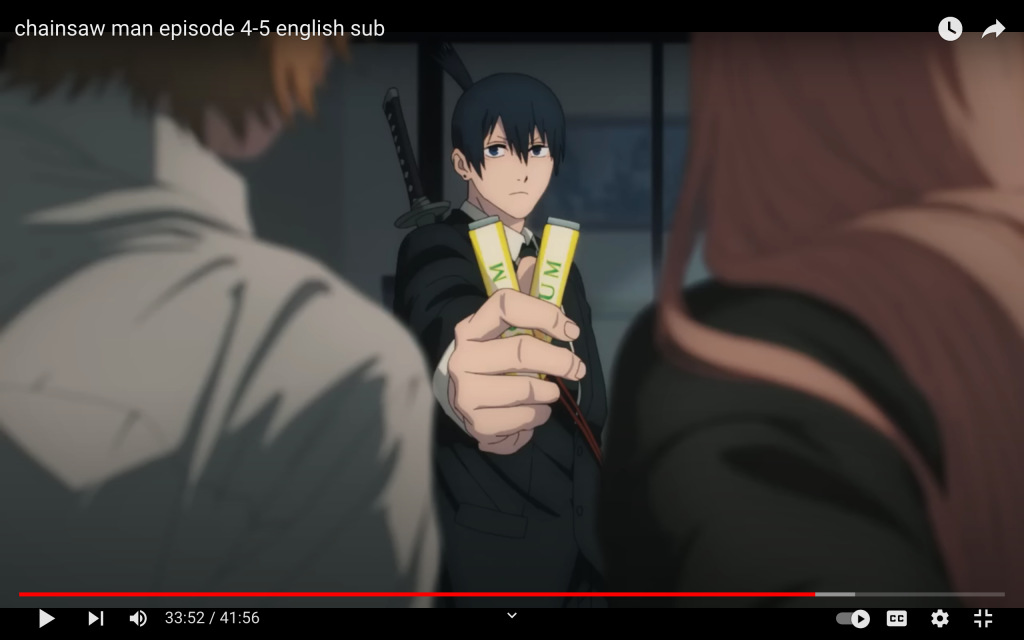
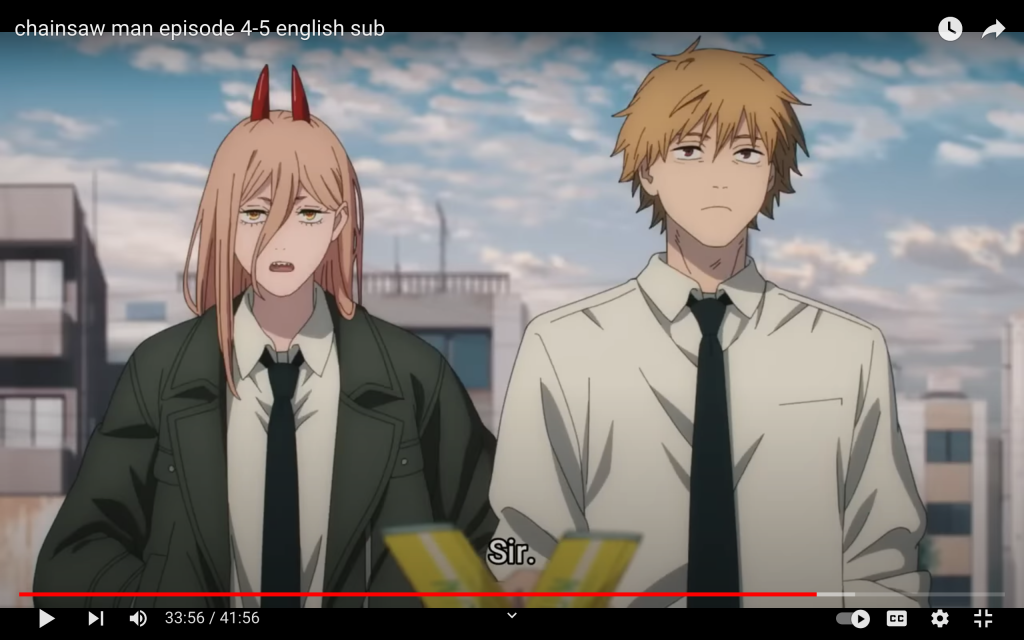
Pero eso no es todo. Aparentemente Denji y Power le jugaron una broma muy pesada a Aki, y está tan furioso que los podría matar. ¡Y estaba muerto de la risa! No puedo dejar de preguntarme qué broma le hicieron.

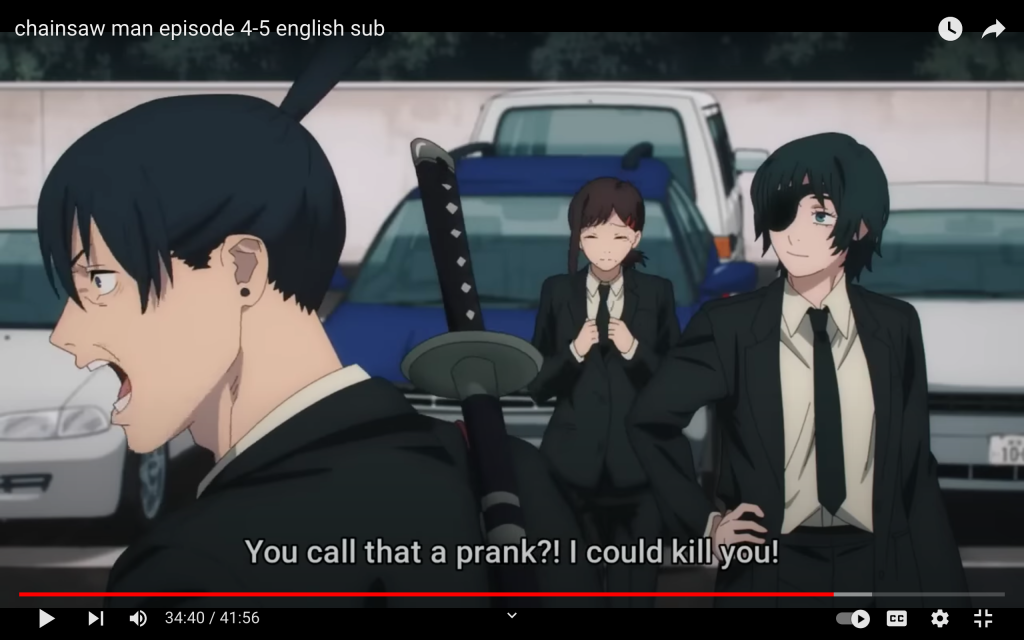
¡De hecho! Me interesa más que la apariencia del Demonio a enfrentar.

Pero al ver la actitud de Arai, yo pensé… ¡Ugh! No voy a extrañar a este tipo.
Incluso Denji y Power parecen estar tranquilos, pero en el fondo, deben de querer comerse a Arai vivo.

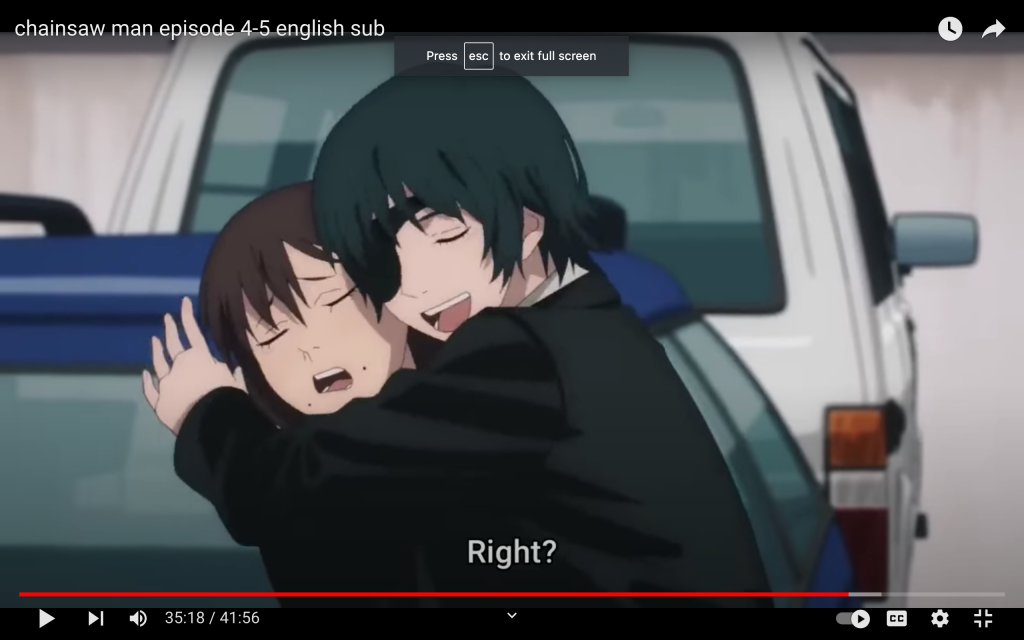
Por su parte, Himeno se pone coqueta, lo que basta para motivar tanto a Denji como a Arai. ¡Y sigo sin entender cuál es la obsesión de Himeno con Kobeni! ¿Acaso está enamorada de ella o qué? Sin embargo, Denji no acepta. De nuevo. ¡Qué buena maestra resultó ser Makima!

Pero Himeno tiene más cartas por jugar.

¡Cuidado! ¡No le vayas a ser infiel a Makima!


¡Y Arai, chupámelo!
Luego pasamos a ver dos cosas que realmente disfruté ver. La Primera es el icónico cementerio de los Devil Hunters….

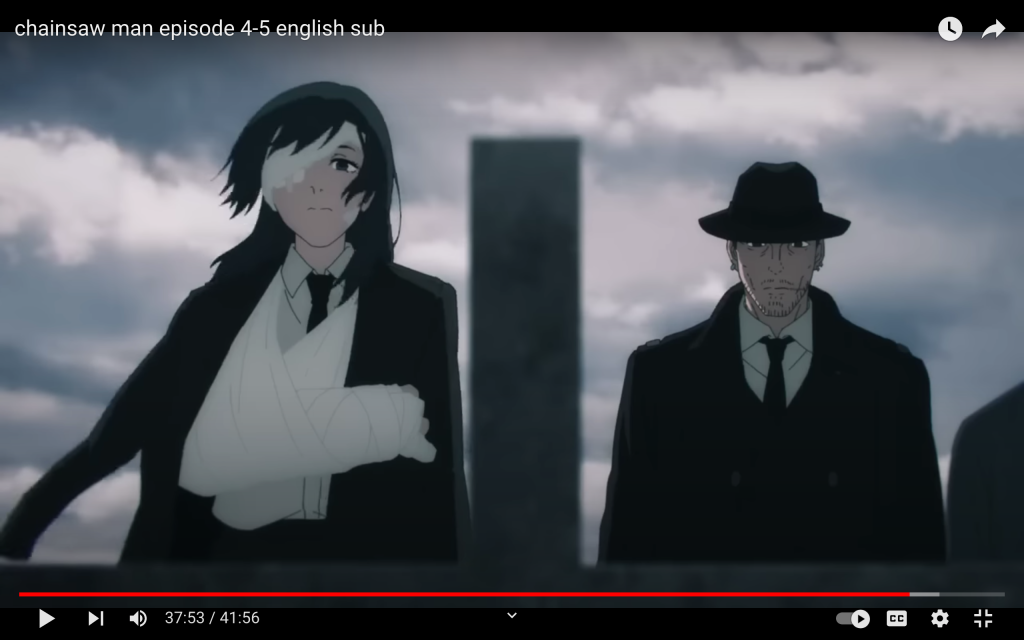
y la segunda la introducción de Kishibe, uno de mis personajes favoritos. 1. Su icónica frase – Los demonios temen a los cazadores con un par de tornillos sueltos. 2. Su interpretación. Hecha por Kenjiro Tsuda, quien es también es The Beholder en To Your Eternity, es impecable.

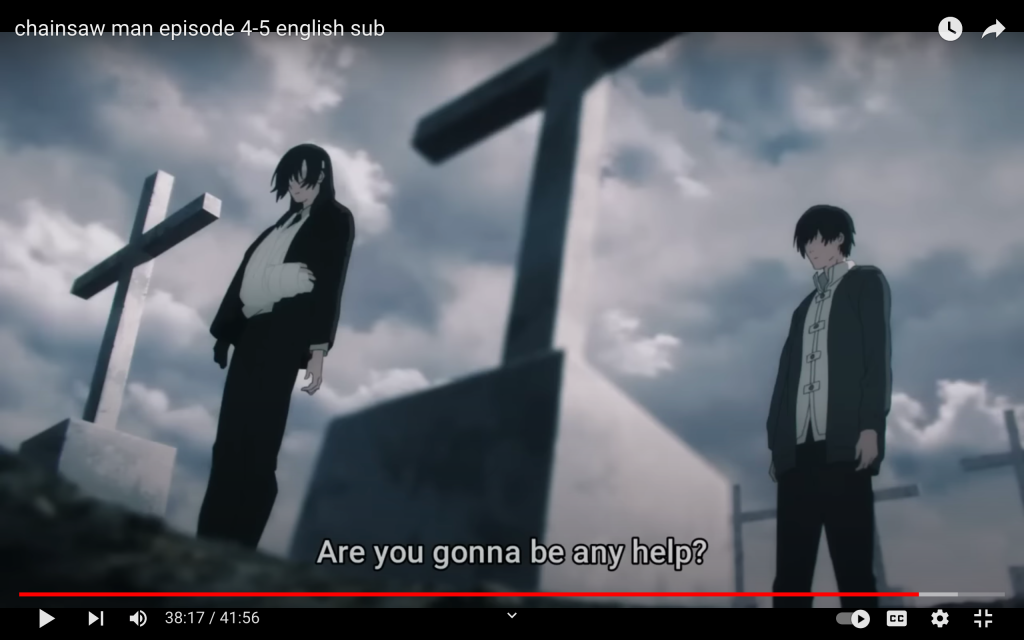

Kishibe introduce a Himeno su nuevo compañero, quien no es otro que Aki. Y tras revelarse que es su sexto compañero, le pide que no vaya a morir.
Poco después encuentran a un demonio grotesco con G mayúscula, que Power puede matar con facilidad.
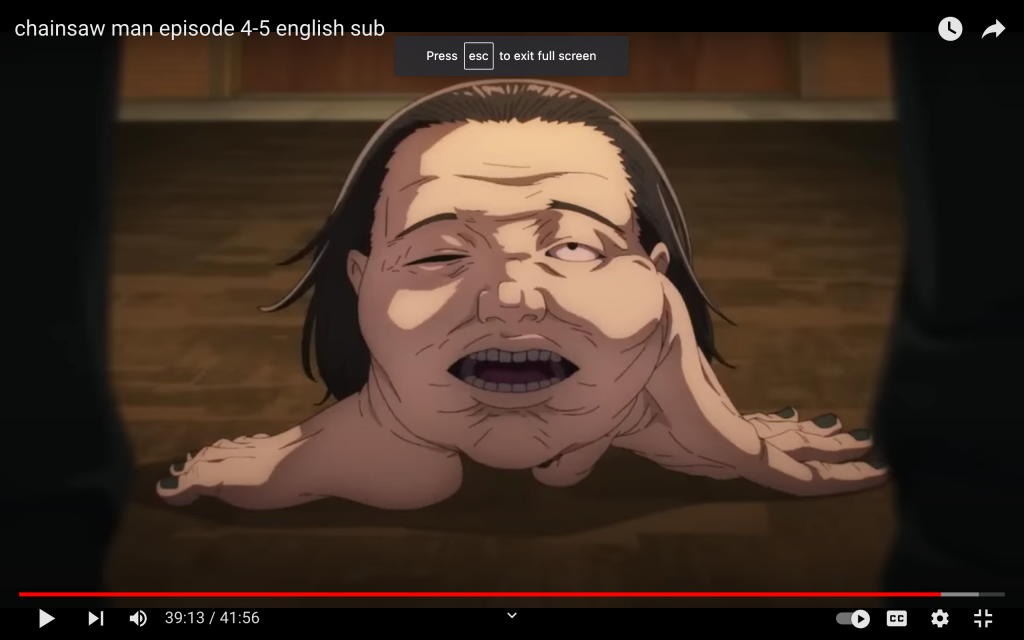

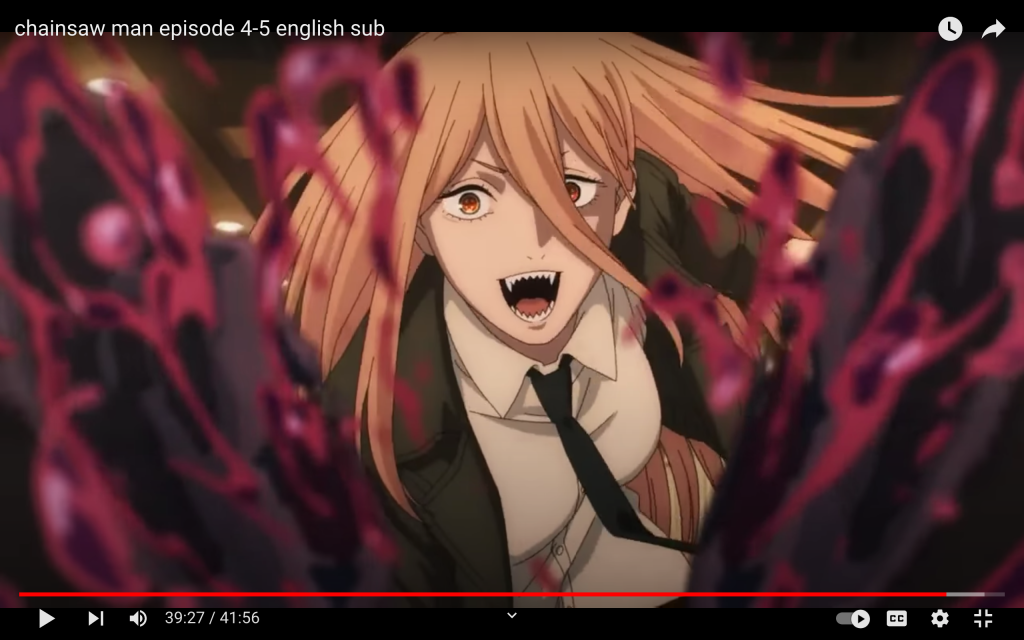

O al menos eso parece, porque resulta que el demonio se quedó flotando ante Himeno, y ésta nos revela que hizo un contrato con el Demonio de los Fantasmas, que a cambio de darle su fuerza a Himeno, consumió el ojo derecho de ésta. Pero a cambio, Himeno puede usar la mano derecha del Demonio, cosa que resulta muy práctica para calmar a Power, a la que le costó un poco caro una broma pesada sobre matar a Kobeni.


De nuevo, las reacciones de Denji y Power se roban el show.
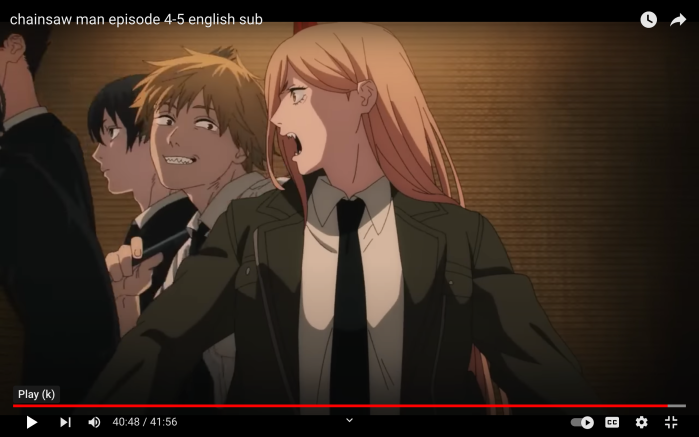
Pero… pronto mi risa se transformó en pavor, cuando, tras una serie de observaciones, Arai se da cuenta de que están atrapados en ese cuarto. ¿Cómo lo supo? Simple, porque si baja o sube las escaleras, llegará al piso al que estaban, o sea… el ocho.
Y con la cara de terror de Kobeni, terminaremos este capítulo.

CONCLUSION
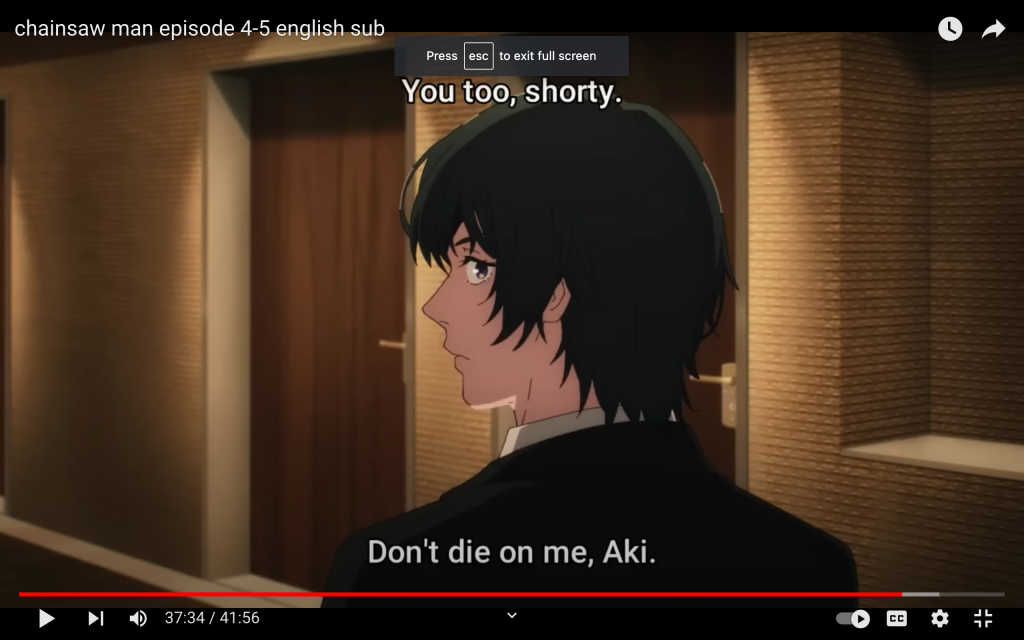
Wow! Más pode decir de lo que pensaba. ¿Y qué más debo decir? Otro genial capítulo de Chainsaw Man. Vemos mejor el pasado de Aki, el desarrollo de Denji, la genialidad de Power y el gran carisma de Makima. Aunque he de decir que Kobeni no me terminó de convencer, a lo mejor ella evoluciona luego, pero tampoco es que me parezca el super personaje. Y en cuanto a Arai… ¡Quedé con deseos de que le den una patada en la entrepierna! Se la ganó.
Sin embargo, Himeno brilló bastante bien, y a pesar de los pocos segundos en que parece Kishibe, verlo en pantalla fue delicioso. Prueba de que son dos de los más grandes personajes de Chainsaw Man.
El ending estuvo bien, pero me sigo quedando con Chainsaw Blood, de Vaundy. ¡Pero qué buenas estaban las referencias de M.C. Escher! Desde luego muestra de lo que vamos a ver en el Episodio VI Pero… ¿Soy yo o también hay referencias a Enter the Matrix?
Pero bueno… ¡Aquí termino yo! Espero que les haya gustado mi review, tanto como a mí me gustó escribirlos. ¡Nos vemos en la próxima!

